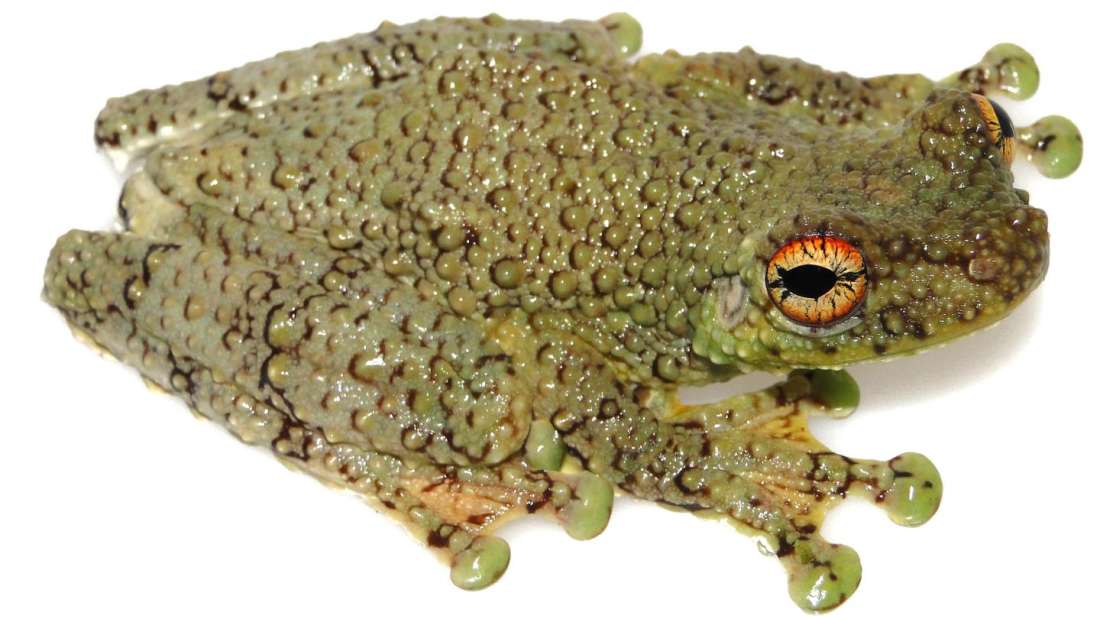- Natives from some parts of the Amazon region have long believed that a deadly pit viper, the bushmaster, can sing.
- But the true vocalists behind the call are two species of large tree frogs that live in hollow tree trunks in the Amazonian forests.
- The first frog is the little known Tepuihyla tuberculosa, and the second frog is a newly discovered species that has been named Tepuihyla shushupe.
Natives from some parts of the Amazon region have long believed that a deadly pit viper, the bushmaster (Lachesis muta), can sing. But the venomous snake, which can grow up to more than three meters in length, cannot vocalize at all, scientists say.
Now, researchers studying frog populations in the Amazon basin of Peru and Ecuador have traced the alleged “singing” of the bushmaster to its real vocalists: two species of large tree frogs that live on hollow tree trunks in the Amazonian forests.
The first species is the little known Tepuihyla tuberculosa, a greenish cream tree frog that calls out in a cackle of short notes, scientists report in a new study published in the journal ZooKeys. The population status of the species is currently unknown, and the authors suggest listing the species as Data Deficient in the IUCN Red List of Threatened Species.
Call of Tepuihyla tuberculosa
The second frog is a newly discovered species that the team has named Tepuihyla shushupe. The natives reportedly use the word shushupe to refer to the venomous bushmaster. Tepuihyla shushupe’s call, too, consists of a cackle of short notes “repeated at a fast rate”, the authors write, almost resembling the call of a bird.
So far, the newly described frog is only known from the headwaters of rivers Ere and Campuya, in the Putumayo river basin near the boundary between Peru and Colombia. Given the lack of information on its population status, the team suggests that Tepuihyla shushupe be classified as Data Deficient as well.
Both species are more than three inches long, the authors write, making them particularly large for the Tepuihyla genus. The two species also likely live in tree canopies, and lay eggs on tree holes partly filled with water, the authors speculate.
But why the locals associate the calls of the two species with the bushmaster viper, still remains a mystery.

Citation:
- Santiago R. Ron et al, Systematics of Ecnomiohyla tuberculosa with the description of a new species and comments on the taxonomy of Trachycephalus typhonius (Anura, Hylidae), ZooKeys (2016). DOI: 3897/zookeys.630.9298